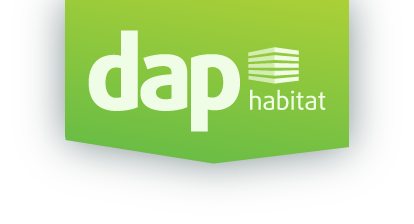DAP Habitat System
In order to identify and reduce the negative impacts coming from the production activities of the habitat value chain, it is important to study the products and services environmental performance in this value chain. The environmental declaration of type III are based on Life Cycle Assessment (LCA) studies, which aim to identify the potential environmental impacts of products/services. Therefore, the Environmental Product Declarations (EPD) appear as a communication tool of environmental information of products/services ensuring its scientific validity, once it is a document verified by a third part independent prior to publication.
The DAPHabitat System appeared in order to cooperate in the preparation and publication of this type of documents in Portugal, being a national registration programme of Environmental Declaration of type III for products for the habitat.
The DAPHabitat System was built within the scope of a SIAC project “approved within the framework of a Collective Efficiency Strategy of the Sustainable Habitat Cluster (QREN POFC 01/SIAC/2011 nº18653)”, and aimed to develop a verification and registration system, with national and international visibility, for Environmental Product Declarations (EPD) specific for products of the habitat, based on objective and independent criteria, allowing for the realization and availability of PCR (Product Category Rules) that substantiate the creation of EPDs that are accurately validated on a database with public access.
DAPHabitat
The DAPHabitat System is an EPD programme for products and services of the habitat field, aligned with the ISO 14025 and the EN 15804. This EPD programme allows any organisation or entity from any country to request the development of the PCR and registration of EPDs.
The development and the communication of EPDs make environmental performance of products/services tangible through documents verified by an independent third party. An EPD communicates accurate and verified information that may stimulate a market-driven continuous environmental improvement. On the one hand, manufacturers will be better acquainted with the performance of their products, being able to identify improvement opportunities in order to reduce negative environmental impacts. On the other hand, when the moment to purchase products of the cluster habitat arises, customers (organisations or end consumers) will be able to think their choices over with reliable information.
Main goals of the DAPHabitat system:
- To promote the creation and registration of EPDs for products and services of the cluster habitat;
- To create a development strategy for the product environmental information;
- Recognition of the products based on objective criteria;
- Useful tool for producers towards improving negative aspects and objective recognition of the value within the positive aspects of their products;
- To use the content of EPDs for assessing sustainability in construction;
- To improve competitiveness of the national products and remove potential barriers when exporting to demanding, susceptible markets as far as the product environmental performance is concerned;
- To incorporate products of the habitat in the international market.






